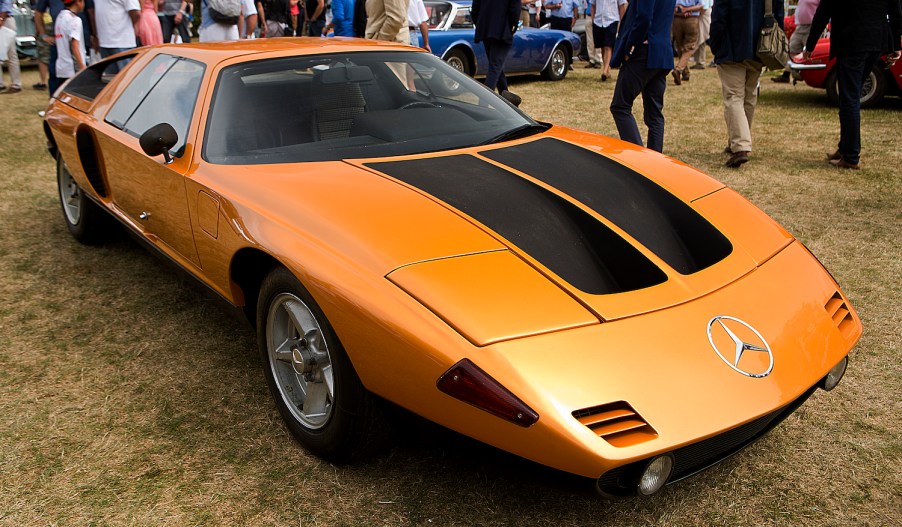
Insanely Fast Cars of the 1960s and ’70s With Extreme Aerodynamics
Muscle cars might seem like simple monsters that eat cooked tires, but even back in the 1960s and 1970s, they required a lot of engineering savvy to be as fast as they were. Especially in racing, cars were outfitted with outrageous aerodynamic body kits that helped them reach the same speed that NASCAR runs today. Car aerodynamics has become more sophisticated in streetcars and racing, but it all started somewhere. One of those places was on the oval, and another was in Stuttgart.
Dodge Charger Daytona

Ford and Mercury dominated NASCAR at the tail-end of the 1960s. Chrysler responded with the Dodge Charger Daytona and Plymouth Superbird. With a Hemi, the 1969 Dodge Charger Daytona became the first car to hit over 200 mph. To comply with homologation rules, Dodge and Plymouth had to sell road-going versions of their race cars with aerodynamic kits. The comically large cast-aluminum wings were built over 23-inches high to redirect dirty air coming from the cars up ahead.
The Daytona also featured a detachable wedge-shaped nose cone, which had holes to release air pressure from beneath the car, according to Hagerty. This helped reduce drag. The Daytona and Superbird were the cars to beat in 1970, winning 38 races before their untimely demise in 1970.
Ford Torino Talladega King Cobra
Embarrassed by the beating it took, Ford planned a retaliation to Dodge’s sudden success. Ford built three prototypes of the Torino Talladega sporting the King Cobra aerodynamic body kit. Instead of having a separate nose cone like the Chrysler cars, the Torino used a single-piece nose cone with less ground clearance. This helped the Cobra achieve more airflow. Ford opted out of a rear spoiler, which caused a severe problem.
The Boss 429, Cobra Jet, and 429 Cobra Jet helped the car achieve 200 mph without breaking a sweat, but when it approached corners, there was no rear downforce to balance out the car. The tail end could lose traction through a turn. Strict homologation rules killed off aerodynamics in NASCAR. Unfortunately, the Torino Talladega King Cobra never saw a green flag.
Mercedes-Benz C111

A few thousand miles away from Daytona, a car company called Mercedes-Benz was experimenting with its own aerodynamic project, the C11. The C11 used a fuel-injected four-rotor Wankel rotary engine with 350 horsepower, multi-link independent suspension, and a fiberglass body. It had a wedge-shaped front end that dipped low like the King Cobra and swept back to a vertical rear end, much like a DeLorean. The car could hit 186 mph, but unfortunately, the Wankel engine’s many weaknesses forced Mercedes-Benz to shelve the project indefinitely.
These cars made their mark on aerodynamic research, and now every road car uses it to some degree. Today, car companies use aerodynamics to improve fuel efficiency and counter road noise, but one of its original intents was to make cars go as fast as possible.


